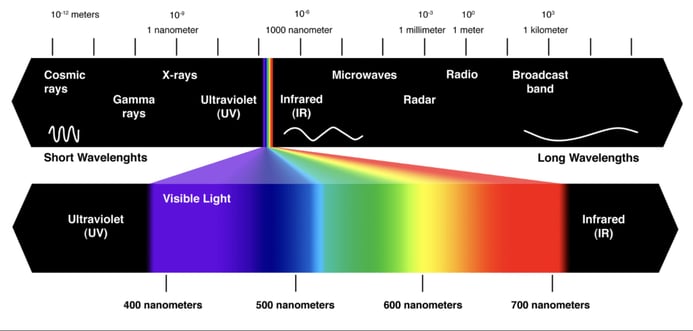Visible light spectrum for animals
The visible spectrum is the portion of the electromagnetic spectrum that is visible to, and can be detected by, the eye. A typical, healthy human eye will respond to wavelengths from about 400nm to 750nm. Different wavelengths indicate colors in the visible spectrum ranging from violet 400nm to deep red color 750nm with a significant sensitivity peak for humans at 555nm green. As bizarre as it may sound, there is no white or natural light “wavelength”. Natural white light is a combination of different color wavelengths. Think of how light traveling through a glass prism turns into visible monochromatic colors of light called the color spectrum. Now mentally reverse the process where the same colors combine and turn into visible light where we don’t discern the individual colors – even though they exist and play a role in how we feel, act, and what happens within our bodies.
Many animal species perceive light different than humans, as their eyes contain different photoreceptors. Poultry and chickens are more sensitive in both the short as the long wavelengths. Research performed by Prescott and Wathes*, showed chickens can perceive light 12 times better in the blue spectrum and 4 times better in the red spectrum. Chickens are even able to see part of the UV-A spectrum, that is not visible to the human eye. Swine and pigs are actually less sensitive to colors and perceive less of the red spectrum versus humans.
*Spectral sensitivity of the domestic fowl (Gallus g. domesticus) – N.B. Prescott and C.M. Wathes (1999)


